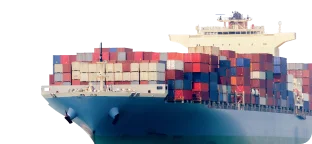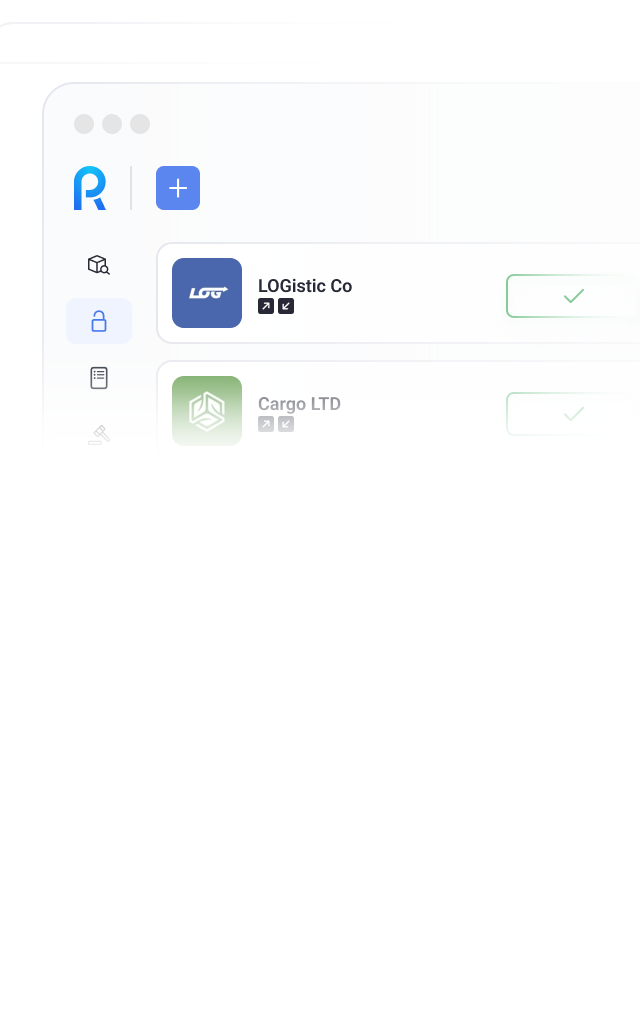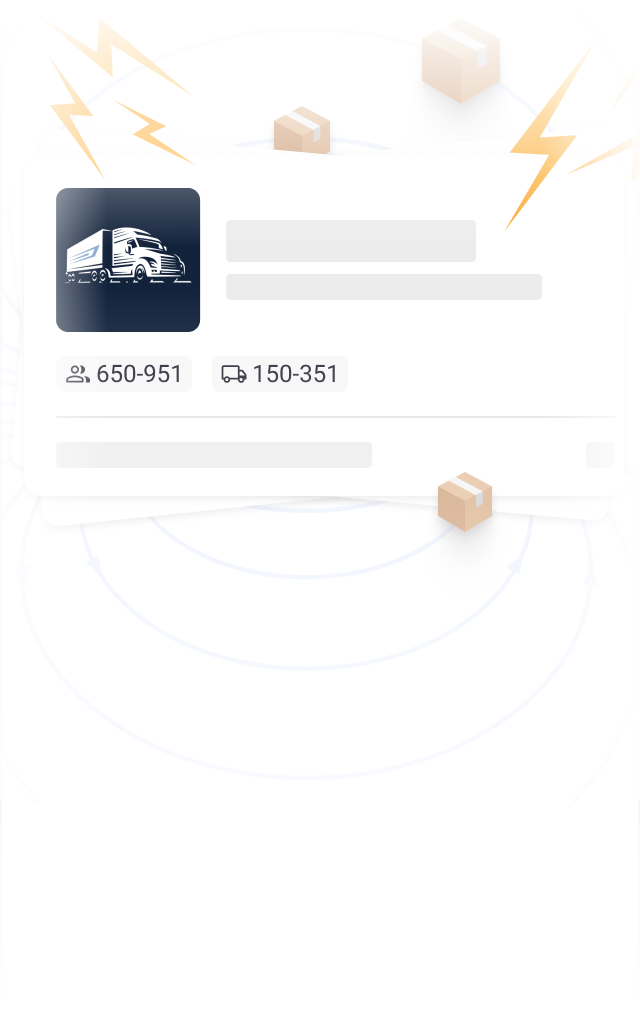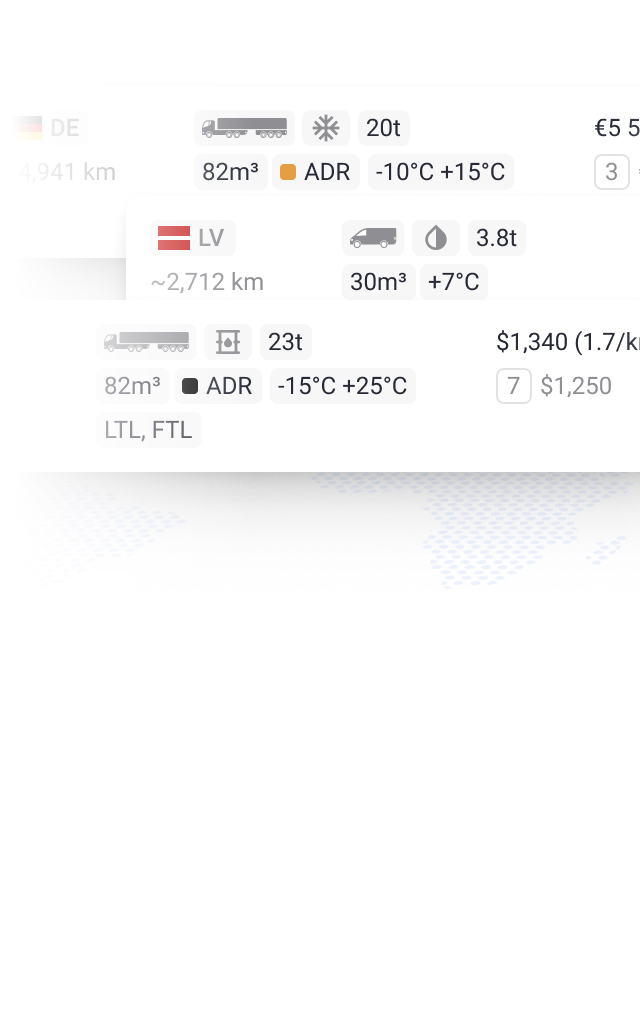
Maritime Shipping Companies



















Maritime freight transportation is a method of transporting large volumes of goods using cargo ships. The goods are packed into containers, which are then loaded onto the ship. An average cargo ship can carry around 18,000 containers. Sea transportation is considered a cost-effective solution for moving large shipments over long distances.
Sea delivery allows countries to import and export goods in volumes that are not always feasible with other modes of transport (such as air or road transport).
These types of shipments play a crucial role in both international and domestic logistics, ensuring the delivery of large quantities of goods over long distances using river and sea vessels. Approximately 90% of goods worldwide are transported with the involvement of this mode of transport.
Maritime freight transportation is part of the supply chain. Many companies use the services of logistics operators (3PL), who ensure safe and legal delivery of goods. Operators are familiar with the requirements and regulations of transportation, so you do not need to work with a separate transport company for each shipment.
After signing a contract with a 3PL transport company, the operator picks up the cargo from your supplier and delivers it through the port using one of the specified delivery methods. It is important to note that delivery time may include delays for customs clearance on both sides of the port.
If you do not have enough goods for LCL (Less than Container Load), it may be more cost-effective to send them by air or express delivery service—these methods are designed for small shipments but are more expensive due to the limited capacity of the vehicles.
There are several types of vessels that companies use for sea transportation:
- Ropax (trailer ships) — transport cars, wagons, agricultural machinery, and other wheeled equipment.
- Bulk carriers — used for transporting bulk and granular cargoes.
- Tankers — designed for liquid materials.
- Container ships — carry goods in standard marine containers.
- Ferries — flat-bottomed vessels for transporting people and vehicles across water obstacles (rivers, bays, or seas).
- Barge carriers — transport barges and are used for loading/unloading in ports with shallow water depths.
- Refrigerated ships (reefers) — used for transporting fruits, vegetables, seafood, and meat.
Vessels differ in their technical equipment, which is tailored to the specific type of cargo they carry. For example, a ro-ro ship has a retractable stern ramp that allows vehicles to drive into the hold.
Ships that are not tankers are referred to as **dry bulk carriers**. Some of these vessels are equipped with cranes for loading and unloading cargo.
Marine transportation is suitable for shipping various types of cargo. The main categories include:
- Containerized cargo. Items such as electronics, clothing, meat, and toys are transported in containers. Metal containers protect goods from extreme temperatures, moisture, and weather conditions. They are also compatible with trains, barges, and trucks.
- Liquid cargo. This category includes hazardous substances like oil and fuel. These are transported by tankers to refineries and other facilities. Logistics companies ensure quality control, proper labeling, and compliance with environmental standards.
- Bulk cargo. This category includes sand, salt, coal, iron ore, and grain. Dangerous cargoes that may liquefy during transport require special monitoring (e.g., nickel concentrates and coal concentrates).
- Unitized or piece cargo. Goods that require individual loading, such as works of art, household furniture, agricultural machinery, car parts, and more. General-purpose vessels are used for transporting unitized cargo, with items placed in barrels, crates, and boxes.
- Ropax cargo (Roll-On/Roll-Off). This category includes rolling stock, specifically project cargo, heavy equipment, vehicles, and other transportable items. Ports handling roll-on/roll-off cargo offer a range of specialized services, including secondary manufacturing, coating, deparaffination, washing, repairs, and installation of air conditioners, hooks, bumpers, and other components. Vehicle processing centers also conduct pre-delivery inspections. Additional services include inventory management, fiscal representation, distribution and warehousing of goods.
In maritime shipping, two terms are frequently encountered: **Less than Container Load (LCL)** and **Full Container Load (FCL)**. These terms define the method of transportation depending on the volume of cargo occupying the container.
LCL (Less than Container Load)
In the case of LCL, goods from one shipper are consolidated with shipments from others in a single container. This method is cost-effective for small consignments, as the sender only pays for the space they use. Delivery time may be longer due to additional operations involved in consolidating and deconsolidating the cargo.
FCL (Full Container Load)
FCL is used when the shipper has enough goods to fill the entire container. This method provides greater control over the container's contents and condition throughout the delivery process. The container remains sealed during transit, which speeds up delivery and reduces the risk of damage or loss. FCL is more advantageous for large volumes and is preferred for fragile or high-value goods that require minimal handling.
Shippers often wonder which method — LCL or FCL — is cheaper. However, there is no definitive answer, as the cost depends on several factors, such as cargo volume, route, deadlines, and overall expenses.
Key points:
- LCL allows for the shipment of smaller cargo volumes, but the rate per cubic meter (CBM), including local fees, is typically higher than with FCL.
- If the cargo volume is approximately 15 cubic meters or more, it is recommended to compare LCL and FCL rates with your freight forwarder. It’s important to consider not only the freight cost but also transit time and potential additional charges.
Therefore, to choose the most cost-effective option, all details should be taken into account, and it is advisable to consult with a reliable freight forwarder who can help determine the optimal shipping method.
Many companies across various industries use sea transportation, especially when it is necessary to ship large volumes of goods or oversized cargo that would be uneconomical to send by air freight.
Industries such as mining, manufacturing, automotive, agriculture, and electronics often rely on sea transport for their logistics needs, as it allows them to efficiently handle large batches of cargo.
It is important to note that transporting hazardous, perishable, or fragile goods comes with specific requirements, which may involve the use of specialized containers. In such cases, it is crucial to work with experienced freight forwarders who can ensure all rules and regulations for shipping are followed properly.
When transporting goods along rivers, a river waybill is issued for the cargo. In maritime shipping, the equivalent document is the bill of lading, which is issued in three copies — for the shipper, consignee, and shipowner.
There are two main types of bills of lading: **Master Bill of Lading (MBL)** and **House Bill of Lading (HBL)**.
- A **Master Bill of Lading (MBL)** confirms the contract between the shipper and the shipping line. This document is issued by the shipping line (carrier) but does not include the actual details of the shipper or consignee. The shipper may not even receive the original MBL, as it remains within the carrier's electronic system.
- A **House Bill of Lading (HBL)** is issued by the freight forwarder (NVOCC) and serves to confirm the contract between the shipper and the forwarder, rather than the shipping line. The HBL can act as a supplement to the MBL and is often required to meet letter of credit or banking requirements that may not be acceptable to the shipping line. The HBL is useful in situations where the cargo is stored with the forwarder but has not yet been loaded onto the vessel, allowing the seller to confirm shipment and receive payment.
Here are the main advantages that make this mode of transportation one of the most in-demand for millions of companies around the world.
Low Rates
One of the key factors when choosing a service is cost. In the case of maritime freight, the price is significantly lower compared to other modes of transport, such as rail or air freight. The primary reason lies in the lower maintenance costs for ships compared to other forms of transportation.
Ideal for Large Cargo Volumes
Marine transport is best suited for shipping large quantities of goods. Sea delivery allows for the transportation of massive cargo volumes much more efficiently than other modes of transport. It is especially convenient for transporting bulky items such as automotive parts, equipment, and industrial components.
Crucial for International Trade
Maritime shipping has a long history of connecting international markets for decades. Global trade heavily relies on sea transport, which provides the most vital and efficient trade routes worldwide.
Environmental Sustainability
Maximum Efficiency
The ability to organize containerized shipping allows for adaptability to various types of cargo, making this mode of transport versatile and highly productive.
Safety
When choosing a shipping company or freight forwarder, consider the following criteria:
- Company reputation. The quality of services and timely delivery shape a company's reputation. Review feedback, ratings, and try to get recommendations from acquaintances.
- Logistical capabilities. Examine the services offered, delivery geography, and availability of transport vehicles.
- Competitive pricing. High-quality service does not always mean high prices. Compare rates and negotiate for more favorable terms if possible.
- Real-time support. A reliable company provides constant access to delivery updates, including any delays, and offers 24/7 customer support.
- Cargo insurance. Not all companies offer insurance. Ensure your cargo is insured, especially if it consists of valuable or perishable goods.
- Experience and stability. Experienced companies with well-defined processes are less likely to make mistakes and can ensure consistent service. Additionally, check what security measures the company follows and how it protects your cargo.
It’s also important to evaluate the level of service. Reputable companies specializing in maritime shipping often assign a personal manager to clients, respond promptly to inquiries, and have offices in all major ports.
Finding a suitable partner is easy through the Roolz platform, where you can find up-to-date listings of transportation and forwarding companies specializing in maritime freight.
What is maritime transportation?
Maritime freight transportation is a method of transporting large volumes of goods using cargo ships. The goods are packed into containers, which are then loaded onto the ship. An average cargo ship can carry around 18,000 containers. Sea transportation is considered a cost-effective solution for moving large shipments over long distances.
Sea delivery allows countries to import and export goods in volumes that are not always feasible with other modes of transport (such as air or road transport).
These types of shipments play a crucial role in both international and domestic logistics, ensuring the delivery of large quantities of goods over long distances using river and sea vessels. Approximately 90% of goods worldwide are transported with the involvement of this mode of transport.




Add your company


 en
en fr
fr de
de hi
hi pl
pl es
es tr
tr uk
uk